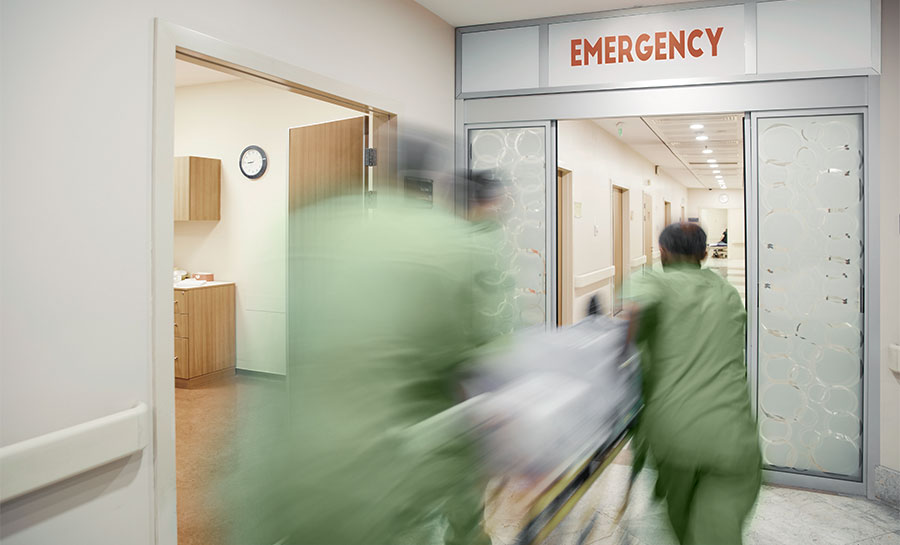
How Medication Management Technology Solutions Can Improve Outcomes in Senior Living
 6 min
6 min
Healthcare organizations tasked with providing medication management for older adults know all too well that this requires resources and oversight. This population is particularly vulnerable to medication management failures given that they have a higher incidence of chronic conditions, various providers, and multiple prescriptions. More than half of adults age 65 and older (54%) report taking four or more medications and 89% report taking at least one. If a senior living community doesn’t have the right system in place for managing these complex needs, common challenges include medication errors, adverse drug events, negative financial outcomes, and staff burnout.
Let’s examine how managing these needs, avoiding common medication management challenges, and improving outcomes can be simplified with a technology solution designed to meet the unique needs of senior living communities and the pharmacies they partner with.
Polypharmacy and Other Challenges of Medication Management
For older adults, polypharmacy is a serious healthcare concern. Commonly defined as the regular use of five or more prescription medications, polypharmacy often comes with challenges for residents and their caregivers. These unfavorable outcomes range from decreased quality of life to increased mortality risk, along with an increased risk of adverse drug events, falls, disability, medication nonadherence, and more.
Polypharmacy also brings with it additional costs to adults living in these communities and added administrative burdens for the communities themselves and their partner pharmacies. Tracking multiple prescriptions, preventing adverse drug events by evaluating for the potential of drug-to-drug interactions (DDI), drug duplications, allergies, etc. all require adequate staffing and payroll hours. This is daunting given the current nursing workforce shortage. And even in the best of circumstances, time spent on these tasks takes staff away from direct resident care.
Current Solutions for Medication Management in Senior Living Communities
Without a robust electronic medication management solution, every stage of prescribing and administering medications is subject to a labor-intensive, error-prone process. In some cases, senior living communities still rely on paper medication administration records (MARs) to track and document prescriptions. Accurate communication between providers, wellness staff, and pharmacies that ensures safe medication administration can be challenging with these manual methods of medication management.
Challenging Outcomes of These Solutions
Healthcare fragmentation means that more than one provider might prescribe or refill a medication, leaving the senior living community and their pharmacy as the checkpoint for this concern. Blind spots also increase the risk of DDI happening, especially for residents with many prescriptions. New prescriptions must follow multiple steps to reach the resident and might require faxing or phone calls to the pharmacy, where written and verbal prescription transcription errors can happen.
These problems can lead to adverse drug events, which account for an estimated 700,000 emergency room visits and 100,000 hospitalizations each year. They also add complexity that can contribute to medication non-adherence.
Benefits of Electronic Medication Management Solutions
A senior living community that adopts an electronic medication management solution can expect some welcome improvements to their medication workflows. Automation reduces staffing demands, improves efficiency and resident outcomes, reduces medication errors, and helps with adherence to national quality measures for medication administration. Further, when the community and a partner pharmacy are connected by this technology, the benefits are exponentially increased.
Key Features of Robust Electronic Medication Management
An ideal electronic medication management solution for the above challenges should be designed to support the unique needs of senior living communities and the pharmacies that serve them. Some key features that are essential include:
- Pharmacy integration – Seamless collaboration with a partner pharmacy simplifies every step of the process for the community via universal medication packaging, easy management of refill authorizations, reduction of manual transcription, and after-hours support that has full visibility into the process
- Workspaces for each role – Role-based workspaces that are designed for collaboration and ease of use for both wellness teams at senior living communities and pharmacy staff at the pharmacy
- eMAR and eTAR – Electronic medication administration and electronic treatment administration records allow digital updates of resident records with critical information like missed doses, refills, and potential DDIs and allergies
- Barcode scanning – Allows real-time resident and medication identification to avoid administration errors
Pitfalls to Avoid When Choosing a Solution
Some common pitfalls of these electronic medication management solutions can lead to poor user adoption, so looking for the key features above and avoiding the following common problems will help ensure success in your investment.
The wrong electronic medication management solution may miss the mark on crucial details like:
- Tailored features designed for the specific needs of senior living communities
- Functionality that supports the workflows needed to execute medication tasks
- Sufficient technical support and training provided to help users gain confidence in the use of a new product
The Right Electronic Medication Management Solution Improves a Vital Service
Without a doubt, medication management is a core component of the care offered by any senior living community. Challenges in its execution are encountered due to polypharmacy, medication errors, adverse drug events, and the staffing required to manage these concerns.
A robust electronic medication management solution supports senior living communities and their pharmacy partners to exchange information more easily and provide safer care for their residents, reducing errors and adverse drug events and improving overall healthcare outcomes. Streamlining the medication management process allows wellness teams to dedicate more time to care tasks that enhance resident well-being and satisfaction. For these reasons, senior living communities that recognize these benefits readily adopt an electronic medication management solution.





